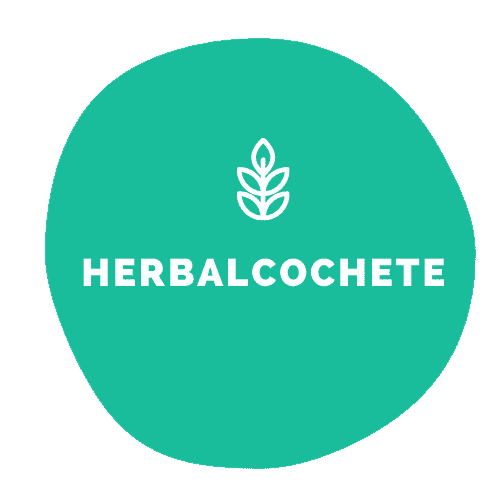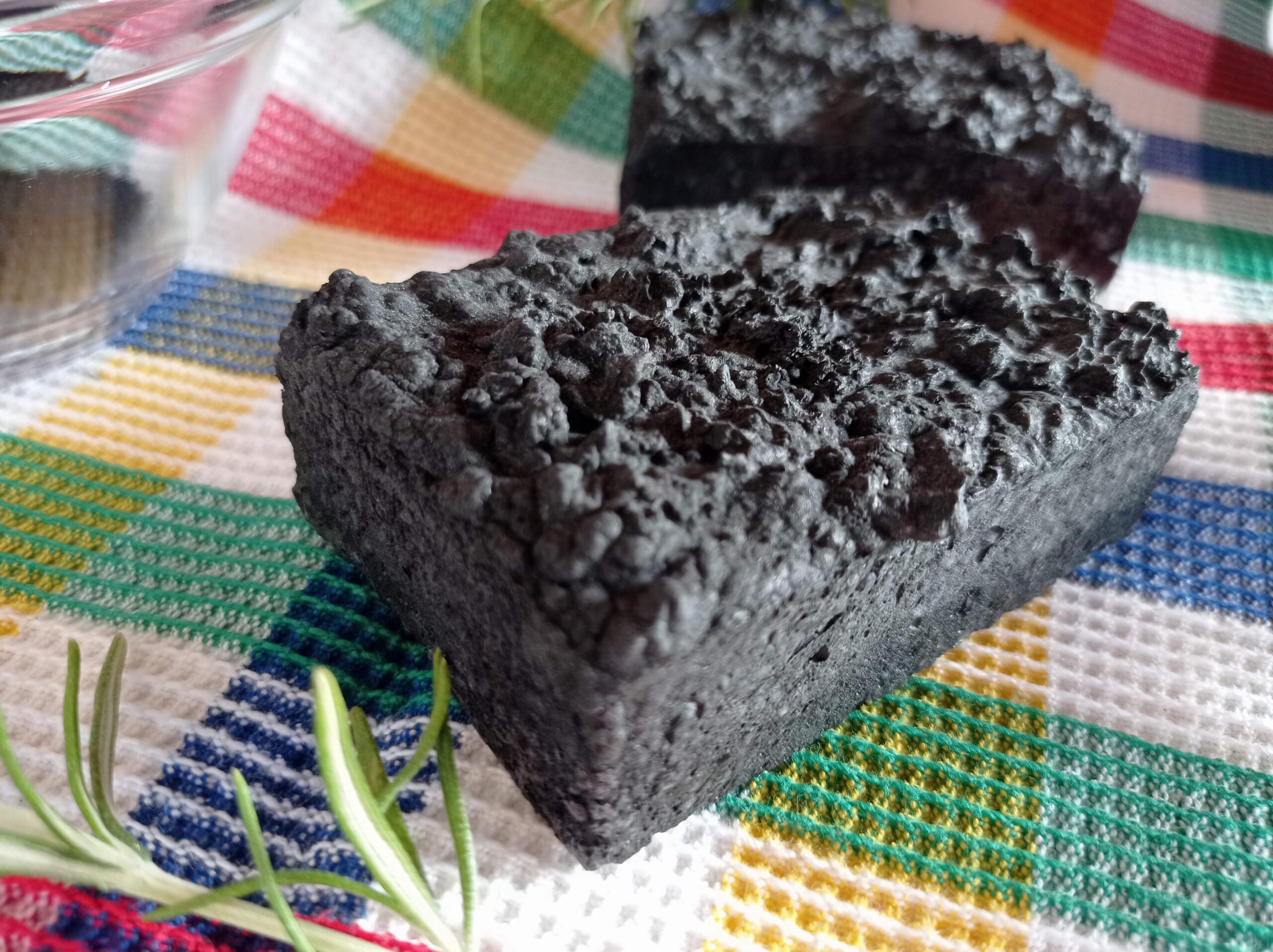Try this charcoal shampoo bar recipe, a purifying shampoo with activated charcoal, aloe vera, and tea tree. If you have dandruff, you may want to add salicylic acid to this recipe, a proven ingredient to help treat dandruff effects.
Aloe vera and argan oil work as mild moisturizers, and tea tree is a natural anti-microbial and anti-inflammatory. All these natural ingredients will enrich the base surfactants cleansing properties to make yourself a purifying shampoo.
What Is Activated Charcoal?
Activated charcoal is charcoal that has been treated with oxygen at very high temperatures to make it more porous. This treatment changes its internal structure, reducing the size of its pores and increasing its surface area.
It’s a black, fine powder usually used to help treat a drug overdose or poisoning. The charcoal’s porous texture has a negative electrical charge, which causes it to attract positively charged molecules, such as toxins and gases. When liquids or gases pass through this activated charcoal, they bind to it through a process known as adsorption. This is the basis of the various benefits charcoal is known for.
Activated charcoal can be used topically or as a food supplement.

Is Charcoal Shampoo Good For Your Scalp?
In skin care, activated charcoal is said to help to trap and clear toxins, oil and dirt from your skin, and treat acne. For haircare, it’s said to be purifying and cleansing, removing oil and toxins from your scalp, even helping with dandruff. In theory, this might be true. However, be warned that there are no scientific studies that backup these claims. It is only proven to treat poisoning, and drug overdoses.
Still, charcoal is a powder and it has a mechanical effect as a exfoliant, therefore, it will cleanse up to a point. Its binding properties with positively charged liquids and gases might also help to topically remove some toxins.
It is also used in skin care as a natural colorant, providing black or blue-grey color. Activated charcoal has no medical counterindications, even being relatively safe for pregnant women. It can be a natural replacement for clays if you don’t get along with them.
I am to test this shampoo bar once it’s ready and check if it does indeed help with an oily scalp. Activated charcoal is an ingredient in face masks, and again I am to test it if, at least for me, it works as well as a clay in purifying my skin. If I don’t see any effects, I will use activated charcoal as a natural colorant alone, as clay like bentonite clay, for example, is proven at least for me to help trap oils and purify skin.
How Do You Make Activated Charcoal Shampoo At Home?
In this recipe, we use 5% of activated charcoal, to provide your scalp with its cleansing benefits. We mix it along with the other solid ingredients to fully incorporate in your shampoo bar. As previously said, it also works as a natural colorant.
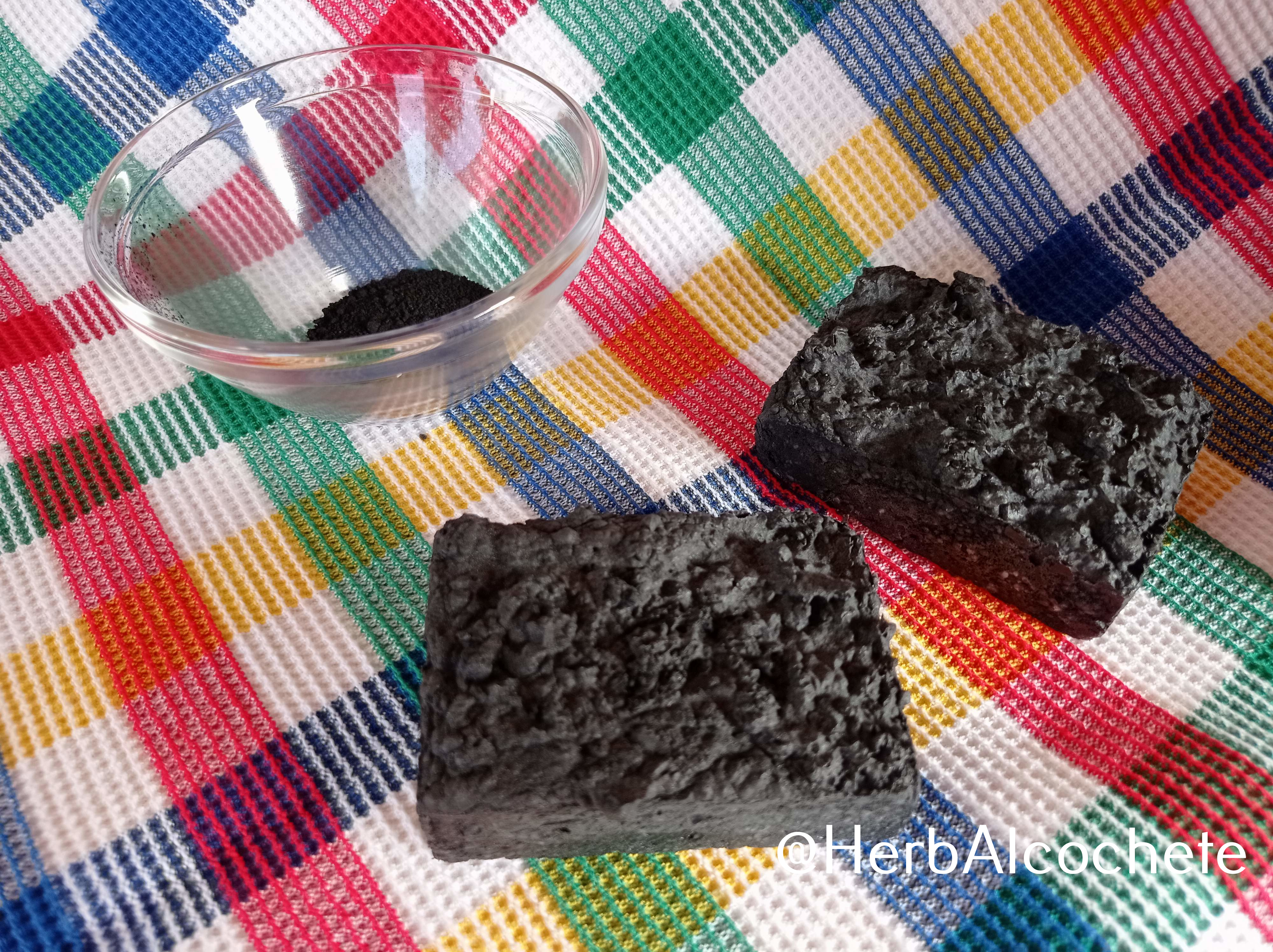
Some posts on the net suggest you to add a bit of charcoal on your shampoo or use shampoos with charcoal in its formula. Those are good suggestions, but it will be messy and very non practical to add a spoon of a black charcoal powder every time you need to wash your hair. On the other hand, commercial shampoos might have other ingredients that will clean but also might irritate your scalp.
Still, these are all valid options to use activated charcoal in your shampoo.
Does Aspirin Actually Help With Dandruff?
Salicylic acid is used in dandruff treatment products, namely shampoos, and it’s efficacy is backed up by science. It helps to exfoliate/remove excess dandruff flakes, reduce excess of oil and reduce scalp inflammation. However, it’s not straightforward that using an aspirin is the same as using salicylic acid for dandruff.
On the other hand, aspirin active substance is acetylsalicylic acid. It is prepared to be absorbed by the stomach, then breaking into salicylic acid in the intestine mucosa, blood and liver. It’s a relatively complex chemical mechanism, and it’s designed to work well in the right quantities inside your body.
Aspirin contains different acetylsalicylic quantities. Some aspirin tablets contain 75mg of acetylsalicylic acid while others contain 300mg.

So, when using an aspirin to treat dandruff, the arisen questions for me were: how do you break the aspirin to get salicylic acid outside your body? And how much salicylic acid (in mg) will you have from an aspirin for your dandruff treatment? I had no simple answers to them. While it might work, using aspirin to treat dandruff is like using a hammer to unscrew bolts… It is not prepared for that.
The best way to use salicylic acid to treat dandruff is to purchase salicylic acid as a cosmetic ingredient. It is prepared for cosmetic products, like masks or say, a purifying shampoo like this charcoal shampoo bar recipe. You can also control quantities much easier.
Charcoal Shampoo Bar Recipe Ingredients
This charcoal shampoo bar recipe, along many others from this blog is based in two mild surfactants with pH of 5.5: SCI and Cocamidopropyl Betaine. Check why I use them in this recipe post: Solid Shampoo Bar Recipe With SCI. They are very mild, used in baby shampoos, and as long as you are not sensitive to any of its compounds, they are good for any hair type or condition.
To make this a purifying shampoo, besides activated charcoal, to help with irritated, itchy scalp, or sensitive scalp, I’ve used the following natural ingredients:
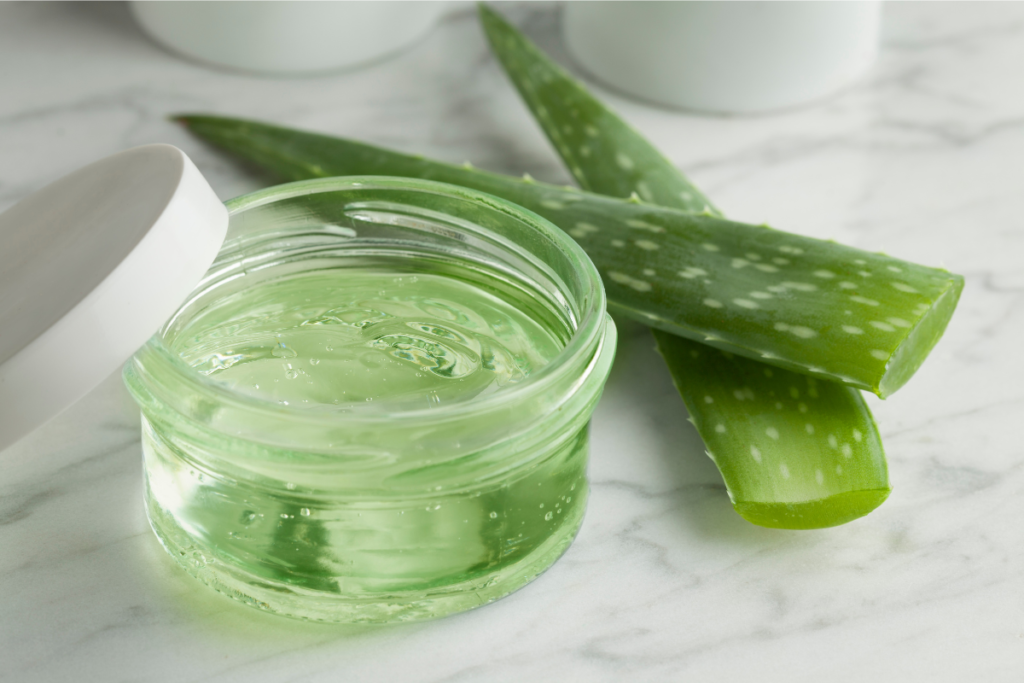
Aloe Vera
A natural gel from the aloe vera cactus-like plant. A mild greasyless moisturizer ingredient, very used in sunburns, good for sensitive skin. It also has with antibacterial and antifungal properties, It may help nourish and reduce scalp inflammation. Antifungal properties may help with dandruff.
If you don’t have access to an aloe vera plant, and don’t want to spend money on another ingredient, you can replace aloe vera with distilled water.
Neem Oil
I’ve purchased neem oil due to its strong and several medicinal properties: anti-inflammatory, antiseptic, antibacterial, anti-fungal, anti-viral. Many of them are backed up by science. I wanted to use it in healing balms. It does have a very strong smell though and may be a no-go for your skin care products, but you will also lose its medicinal benefits. Might be the best oil for skin/hair conditions, if any other works.
It only makes sense to have this oil in a purifying shampoo for irritated, itchy or dry scalp or dandruff. If you already have argan or jojoba oil, and don’t want to spend more money on yet another ingredient, these are two good replacements for neem oil.
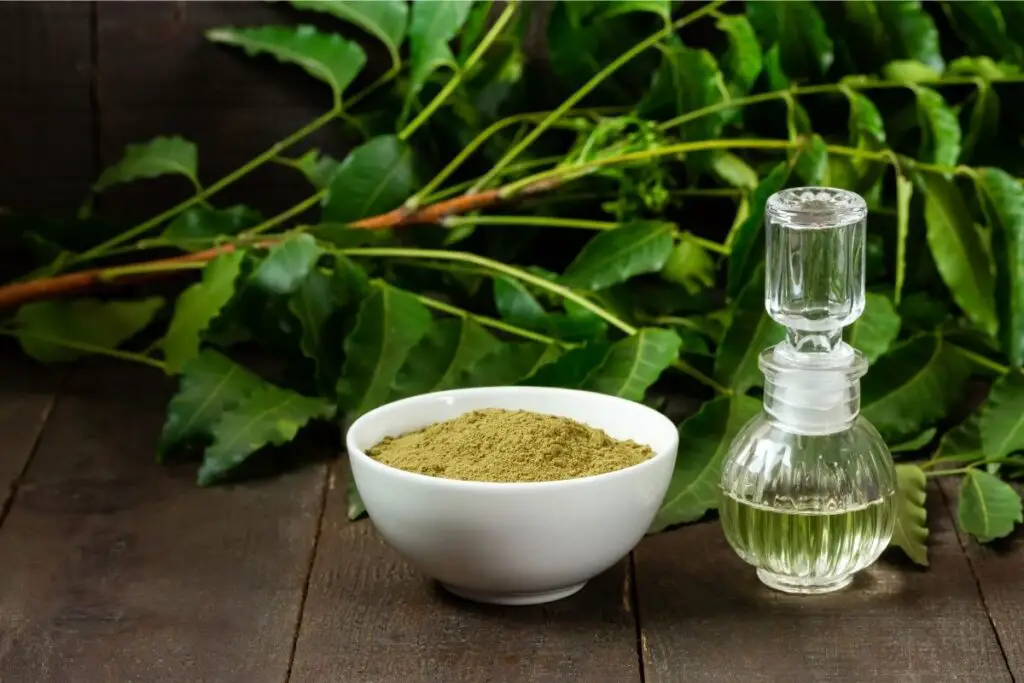
Tea Tree Essential Oil
Another natural ingredient with several medicinal properties: anti-bacterial, anti-inflammatory, anti-fungal, anti-viral. Not all of them are well understood, but some studies prove its effectiveness. These properties, along with neem oil, may help reduce scalp inflammation, or dandruff. It’s also good for head lice.
I could have used a herbal-infused water, but when it comes to sensitive, irritated skin, I fear biochemical reactions between many ingredient compounds. Aloe vera, neem oil and tea tree oil may help, but any of them may also be the cause for skin irritation. Therefore, I prefer to use distilled water. Can’t have anything more neutral in this world for skin or hair care.
Find Where to Buy Natural Shampoo Bars
Willing to try or use regularly natural shampoo, but you’re not really into DIY? Want to go zero-waste crazy with shampoo bars? Find where to buy natural haircare shampoo bars, listed by main ingredients and hair type:
- Rosemary and Mint Shampoo Bar (Etsy)
- Aloe Vera Shampoo Bar – for dry hair and sensitive scalp (Etsy)
- Jojoba Oil And Nettle Shampoo Bar for Volume and Shine (Etsy)
- Calendula and Chamomile Shampoo Bar for Itchy Scalp (Etsy)
- Oat Solid Shampoo Bar For Sensitive Scalp (Etsy)
If you love shampoo bars and have no issues in using them, find some at the following links:
- Apple Valley Shampoo Soap Bars (don’t forget the Hair Rinses)
Here’s a choice of natural liquid shampoos if you prefer the liquid stuff:
- Dry Hair Shampoo (Just Nutritive)
- Oily Hair Shampoo (Just Nutritive)
- Grow New Hair Shampoo (Just Nutritive)
- Restorative Shampoo For Dry Hair (100% Pure)
- Pure Glossing Shampoo (100% Pure)100% Pure Glossing Shampoo
How Do You Use a Solid Shampoo Bar
Wash your hands and wet your hair in the shower or bath. Make a lather first with the shampoo bar, water and your own hands, then spread the lather in your hair.
Once the shampoo bar is making a lot of foam, you can also apply the bar directly on your hair. Make sure you follow the direction of your strands to avoid knotting or tangling your hair. Apply mostly in your scalp, avoid the ends. Massage your scalp with your fingertips for a few minutes. Avoid using your nails at all costs. Rinse and repeat until you feel your hair and scalp well washed.
The shampoo bar might not create a lot of lather the first time it’s used – I have no idea why, but it’s something I have observed. Be patient and create a lather with your hands for a little longer. The shampoo bar should create as much foam as a liquid shampoo. If not, probably your scalp just needs another wash.
A neat trick is to use your shampoo bar in the shower inside a saver bag. It helps create more lather.
Related Posts
- Vegetable Oils: Natural Oils For Skin
- Essential Oils: Essential Oils For Haircare Recipes
- Syndet Bar Tutorial: How Do You Make a Syndet Bar?
- Shampoo Bar Recipes: Haircare Recipes
Watch This Video Tutorial Before Starting Your Recipe
Equipment
Ingredients
Solid Ingredients
- 50 g SCI (sodium cocoyl isethionate)
- 5 g activated charcoal
- 2 g Salicylic acid Optional
Liquid Ingredients
- 10 g cocamidopropyl betaine or more SCI
- 15 g distilled water
- 5 g aloe vera gel or juice distilled water
- 15 g neem oil jojoba or argan oil
Cooling Phase Ingredients
- 1 ml essential oil tea tree 20 drops
- 0,5 g Liquid Germall Plus check quantities as per manufacturer instructions (using 50% of maximum dose)
Instructions
Preparations and Good Practices
- Learn how to make a syndet bar in How Do You Make a Syndet Bar? or watch the video above. They don't have a recipe but explain in general the steps and ingredients to produce a syndet bar.

- Disinfect all your equipment before starting. You can boil some of your equipment (like the double boiler, glass cups, spoons), and use a solution of 1 liter of water with 1/2 cup of bleach, for items that are not heat-resistant (like the milk frother, plastic cups or the lotion containers)
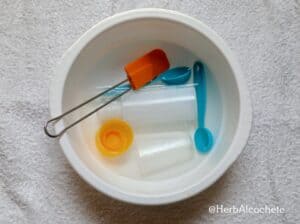
- Measure all ingredients and prepare your workstation. Wear a mask as the SCI releases an irritant dust cloud
- For this recipe, I have used natural aloe vera gel, collected directly from a aloe vera leaf
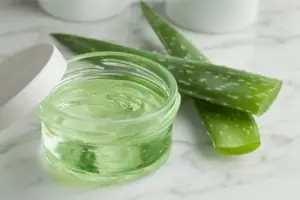
Liquid Phase
- Put a pan with water into the stove (any water as this is for bagne-marie)
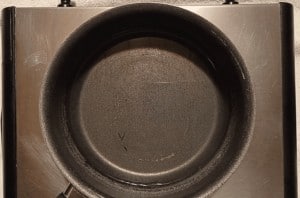
- Add the liquid ingredients (betaine, neem oil, water and aloe vera gel) into the double boiler or a metal jug. Let it heat in low heat. do not heat above 50ºC – 122ºF
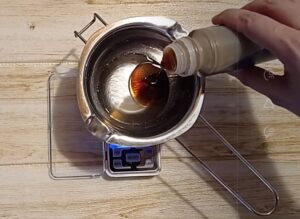
Solid Phase
- Weight all solid ingredients: SCI (wear a mask), the activated charcoal and the salicylic acid powder.
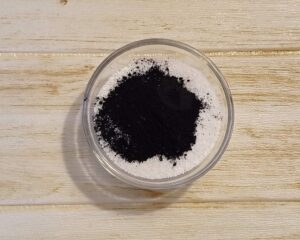
- Without removing the double boiler from heat, add the solid ingredients, roughly 1/3 at a time. You can eye ball it, as this is only to ease mixing and melting the solid ingredients. Mix well with a spoon or whisker each time you add a portion of solid ingredients, until you have an homogeneous paste.
- Mix and heat the mixture in low heat until it has the consistency of homogeneous mush or porridge. Add 1 or 2 teaspoons of distilled water if the mixture is too thick. You will have to be patient as this step takes time.
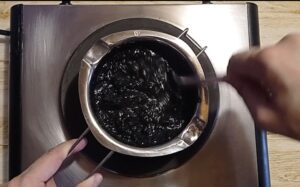
- Remove the double boiler or jug from heat. Mix a bit to cool down the mixture.
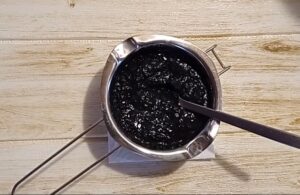
Make Your Bars
- At around 40ºC-50ºC (104ºF-122ºF), add the cooling phase ingredients: essential oils, and preservative. Mix well.
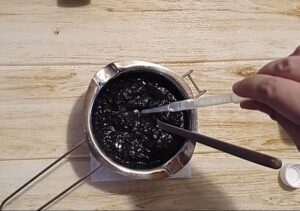
- Take a small spoon of the mixture (1/8 tsp) and rub some water in it. Use a pH strap to measure pH. Should be 5-6. Salicylic acid can lower pH below these values.
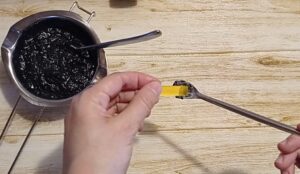
- If pH is too high add a teaspoon of lemon juice or citric acid dissolved in water. If pH is too low, add one teaspoon of baking soda dissolved in water. Mix very well and measure the pH again.
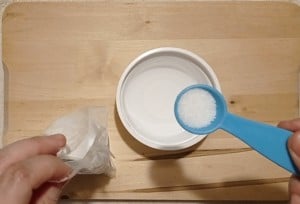
- When pH is corrected (should be 5.5, or at least between 5 and 6), pour the mixture into soap molds. After unmolding let them dry for 2 or 3 days.
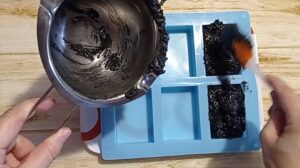
- This purifying shampoo bar is ready to use!

